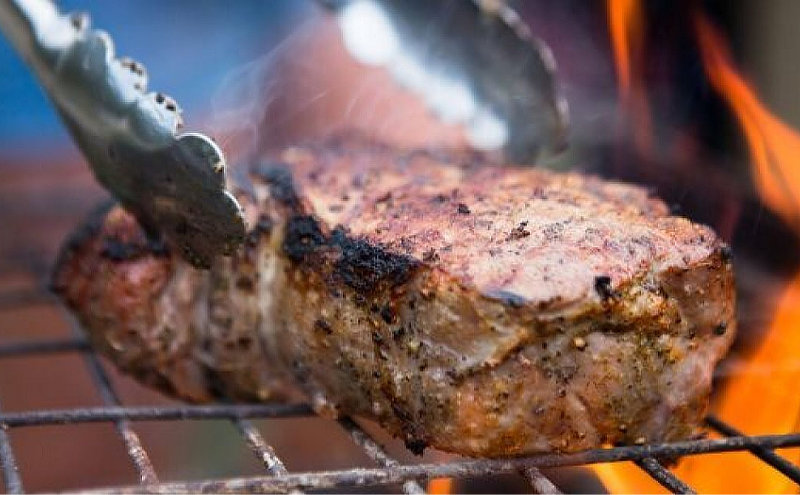Foods High In Zinc For Your Body Immune System


Zinc is a hot topic during these days of Covid-19. It is well understood that this mineral is very good for the immune system. There are many reports of the potential benefits. It is sensible to ensure we have levels of zinc in our bodies sufficient to help our immune system combat disease such as Covid-19.
Our body NEEDS Zinc. Every day. It is a mineral that our body does not make, or store in the body. But it is essential. It’s required for the functions of over 300 enzymes and involved in many important processes in your body.
[ Hint: Think “meat”, especially “red meat”. ]
Zinc metabolizes nutrients, maintains your immune system and grows and repairs body tissues.
Since our body doesn’t store it, you need to eat enough foods with zinc every day. At least enough to meet “daily requirements”.
Zinc has been very successfully used as a therapeutic modality for the management of acute diarrhea in children, Wilson’s disease, the common cold and for the prevention of blindness in patients with age-related dry type of macular degeneration and is very effective in decreasing the incidence of infection in the elderly. Zinc not only modulates cell-mediated immunity but is also an antioxidant and anti-inflammatory agent.
~ National Institutes of Health
[ I am re-posting this information (originally published during May) as a reminder of its ongoing importance. It is essential for overall immune system building ]
How Much Zinc Do I Need?
According to a research paper published at Cambridge University by Lothar Rink and Philip Gabriel “Zinc and the immune system”, Adolescents and adults:
Male 15 mg
Female 12 mg
Pregnant 15 mg
Nursing women 22 mg
Additional research reveals similar numbers to those stated above (plus or minus a few mg). With that said, those are “need” numbers. What about “maximum” numbers? Note that too much for too long may cause toxicity.
My own research (reading studies) reveals approximate maximum daily intake numbers for adults in the vicinity of 40 – 50 mg. Many suggest 30 mg as a very good daily intake target.
Will Zinc Help With Covid-19?
Is there evidence to support taking zinc for Covid-19?
There have been hundreds of studies about zinc with relation to the common cold. It is well established that it helps to reduce the effects and longevity of the common cold. Covid-19 is new and there is not much sound data yet.
However, according to one report I read, “Zinc was shown to inhibit the activity and replication of another coronavirus (SARS-CoV which caused an outbreak in 2002) in the laboratory.”
One might logically conclude that zinc might similarly benefit the immune system with relation to Covid-19, a coronavirus.
What Foods Are High In Zinc?
While there are supplements available, their proper absorption into the body is an issue.
Instead, eating a healthy balanced diet that includes zinc-rich foods should satisfy everyone’s needs for daily requirements.
Consuming more of zinc-rich foods may be beneficial beyond “daily requirements”. Additionally, eating these foods will likely be better absorbed by the body than supplements.
So lets get to it. Which foods are higher in zinc?
Meat
Meat is an excellent source of zinc. Red meat is a particularly good source.
100 grams (3.5 ounces) of beef has up to 5 mg of zinc. So that 10 ounce steak might have about 15 mg. A nice 1/3-pounder hamburger about 8 mg.
Pork has very similar numbers while poultry may have up to 3 mg per 100 grams (about 60% that of beef).
Shellfish
Okay, this one might not float your boat, but Oysters by far have the most zinc of any food product. Up to 150 mg per 100 grams (3.5 ounces). 6 medium size oysters may provide about 32 mg!.
Crab meat has ~ 8 mg zinc per 3.5 ounces. Shrimp, about 2 mg. Fish in general, about 1 – 2 mg per 3.5 ounces.
Seeds
Hemp seeds top the list in this department. A 1-ounce handful may provide about 3 mg zinc (10 mg per 3.5 ounce).
Pumpkin and Squash seeds will provide almost 3 mg in a 1 ounce handful (8 mg per 3.5 ounce). Incidentally I’ve made a habit of eating a handful of pumpkin seeds every day.
I discovered that nearly all store-bought pumpkin seeds come from China. Scouring for American, I discovered these fantastic delicious pumpkin seeds from Oregon (view on amzn).
Nuts
Pine nuts and Cashews have about 2 mg per 1 ounce handful (6 mg per 3.5 ounce). Peanuts and almonds have a decent amount too.
Dairy
Cheese ( ~ 1 mg per slice) and milk (~ 1 mg in a cup)
Eggs
One large egg provides about 1/2 mg. Not particularly high, but a couple eggs with a glass of milk provides about 2 mg.
Note that legumes and whole grains contain “phytates”. These anti-nutrients inhibit the absorption of zinc and other minerals, meaning zinc from legumes and whole grains isn’t as well absorbed.
IN CONCLUSION
Oysters are loaded with zinc. Although not readily available (and some people don’t like oysters).
Therefore the likeliest source of zinc for most people will come from MEATS.
[ Read: The Best Foods To Keep In Your Chest Freezer ]
You might also consider eating a handful of pumpkin seeds and nuts every day. This provides about 5 mg of well absorbed zinc. Still not enough, but it’s “something”.
Vegetarians will likely have significant zinc deficiency. A supplement is one logical workaround – though not as well absorbed as natural foods.
With that said, there are a number of supplement brands to choose from. This particular choice is of the “chelate” type, is apparently better absorbed :
“Nature’s Way”, Zinc 30mg
(view on amzn)
